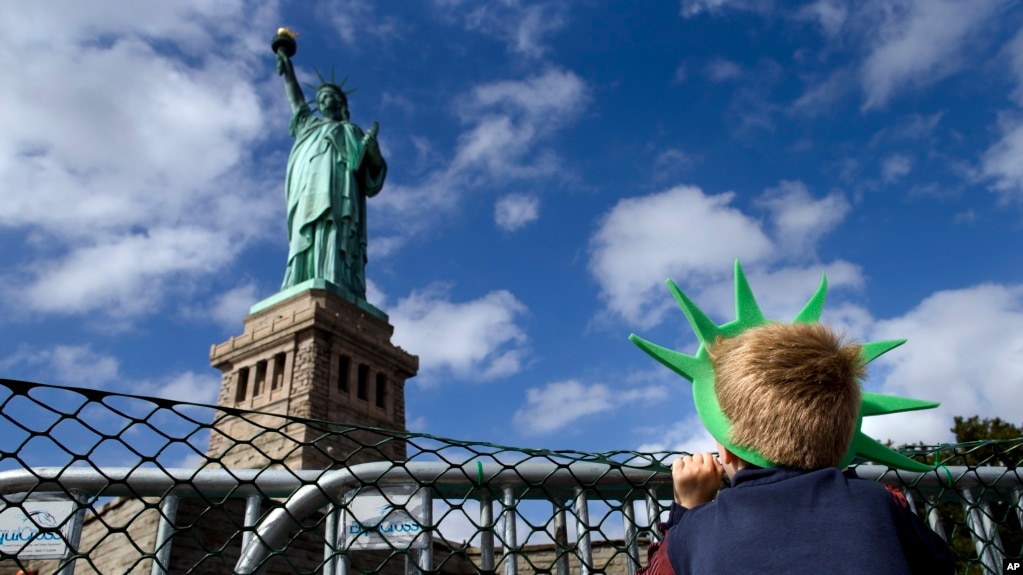Our focus in recent days of course, especially on the Fourth, has included America’s emblematic symbol, the Statue of Liberty.
And so be it. We’ll not be patriotic spoilsports.
But maybe it wouldn’t hurt for Catholics to bring Holy Water and sprinkle a little when they visit, to give it even more Christian fervor. You know the Statue’s actual origins?
The Colossus in New York’s Harbor was conceived, financed, built, and installed by Freemasons.
As a Masonic website itself says, “Many of us had learned an abbreviated tale of the 305 feet-tall copper statue in primary school; France had gifted the Statue of Liberty to the United States as a gift to commemorate their successful alliance during the American Revolution and the larger-than-life figure was placed by Ellis Island in New York to welcome newcomers to the land of freedom. What they failed to teach in school, however, is the Statue of Liberty’s Masonic origin and ties to Freemasonry.”
In 1865, French political thinker and Freemason Brother Édouard de Laboulaye proposed a monumental gesture: that France should gift the United States a statue commemorating their shared commitment to freedom and democracy. But behind this diplomatic tribute stood a network of Freemasons whose quiet efforts would shape not only the monument itself but its very meaning.
Laboulaye commissioned Frédéric Auguste Bartholdi, a fellow Freemason and sculptor, to bring the monument to life.
But sculpting such a symbol would require more than vision—it needed funding, engineering, and coordination across continents. Bartholdi returned to France, where the Franco-American Union, heavily backed by Freemasons, raised a then-impressive 3.5 million francs.
Still, the money fell short of the original goal to unveil the statue by July 4, 1876—America’s centennial.
It took American media magnate Joseph Pulitzer—best known today for the prize that bears his name—to rally the American public. Using his paper, The New York World, Pulitzer raised over $100,000 (about $2.3 million in today’s dollars), ensuring the statue’s completion.
Meanwhile, the statue’s inner framework was designed by another Freemason, civil engineer Gustave Eiffel, later famed for the Eiffel Tower. Copper was selected as the main material, chosen for both its beauty and affordability.
By 1885, Freemason laborers had completed the statue in France. It was dismantled into 350 pieces, packed into 214 crates, and shipped across the Atlantic, arriving at Bedloe’s Island (later renamed Liberty Island) in June of that year.
In line with Masonic tradition dating back to George Washington’s ceremonial laying of the Capitol cornerstone in 1793, the American Committee called on the Grand Lodge of Free and Accepted Masons of New York to lead a fitting ceremony.
On the day the cornerstone was laid, Masonic rituals were followed meticulously. The stone was measured for being “square, level, and plumb.” The Grand Master spread mortar, placed the stone, struck it three times, and consecrated it with corn (for plenty), wine (for joy), and oil (for peace)—each a symbol of blessing. A time capsule placed beneath the cornerstone contained documents such as the U.S. Constitution, George Washington’s Farewell Address, a list of Masonic officers, and even a poem titled On Liberty.
The Statue was officially dedicated on October 28, 1886, with President Grover Cleveland and Episcopal Bishop (a Freemason) Henry Potter presiding.
While many today remain unaware of Freemasonry’s role in the creation of the Statue of Liberty, the organization’s fingerprints are etched into every facet of the monument’s creation.




